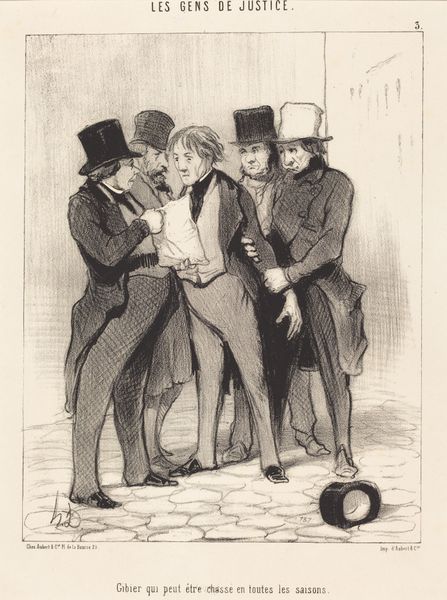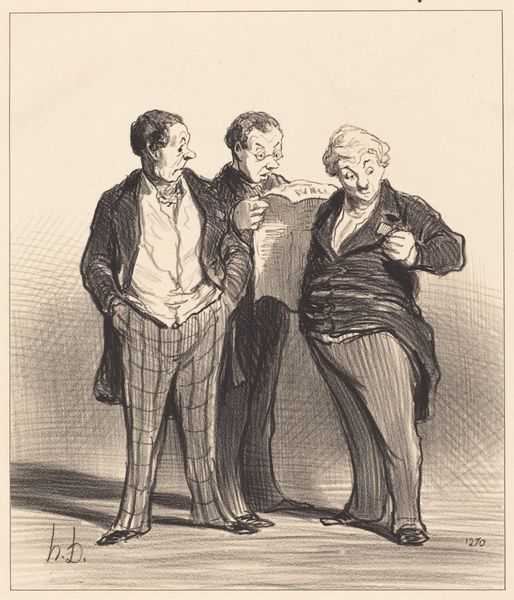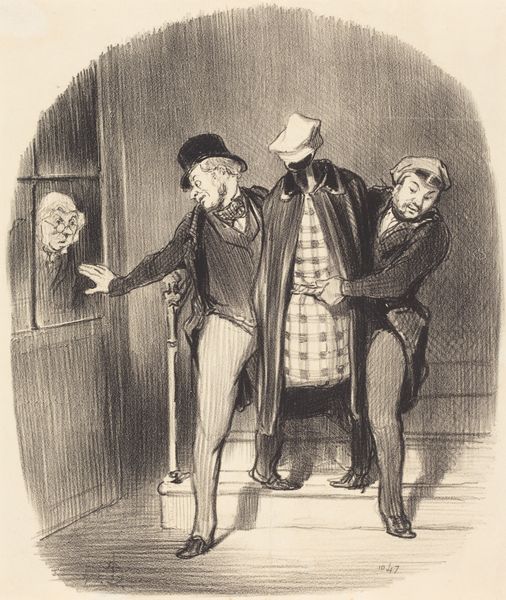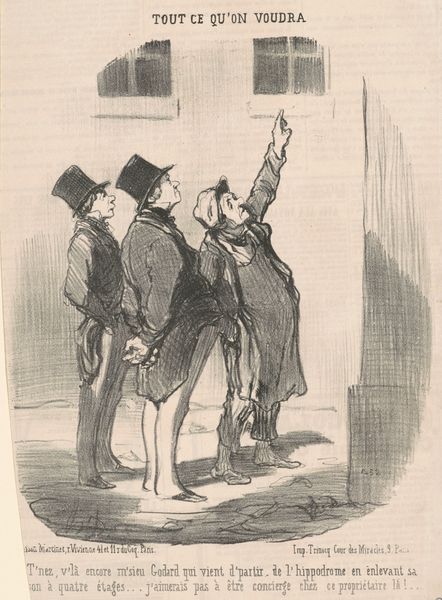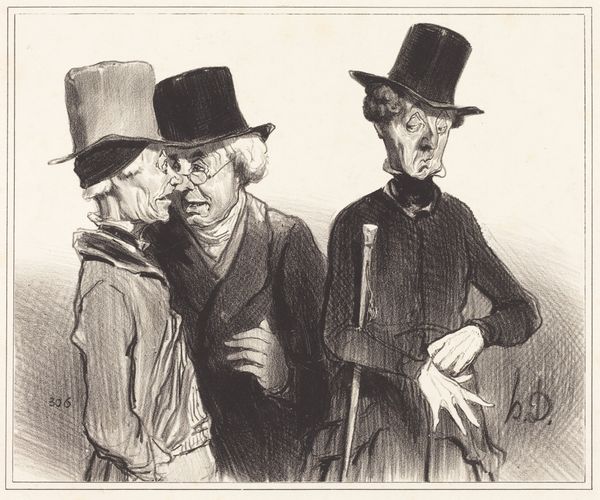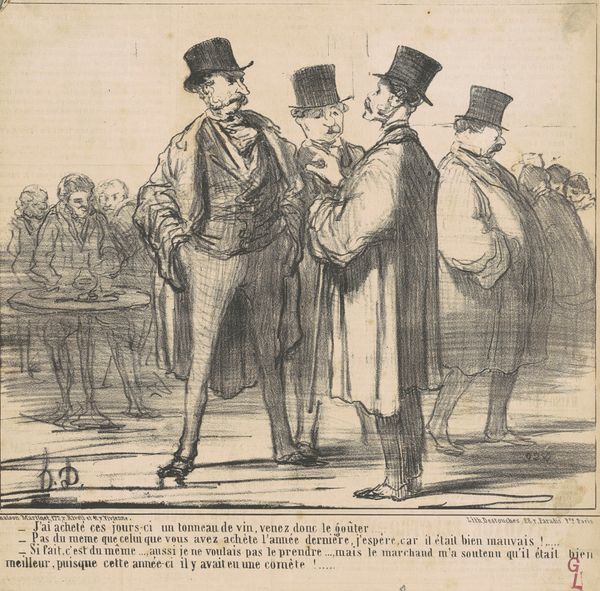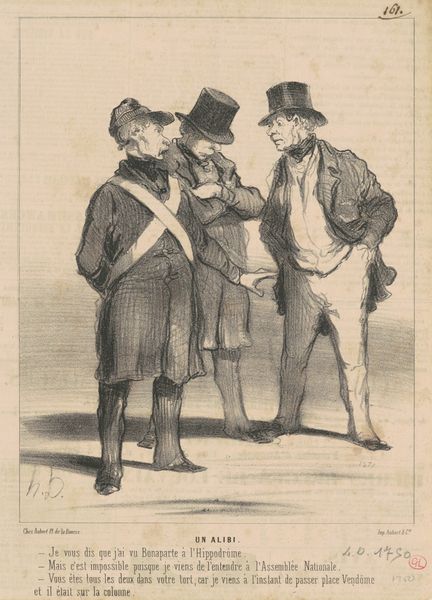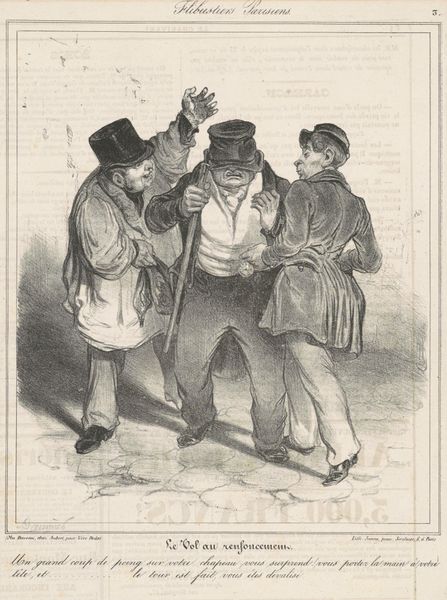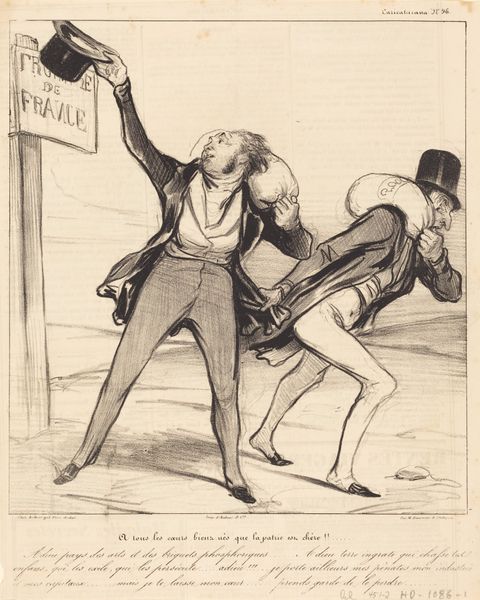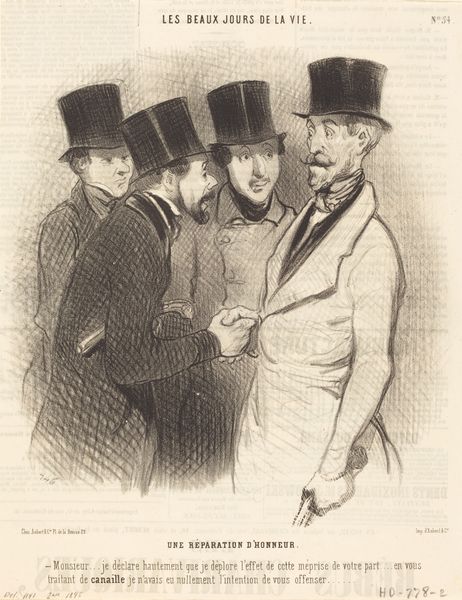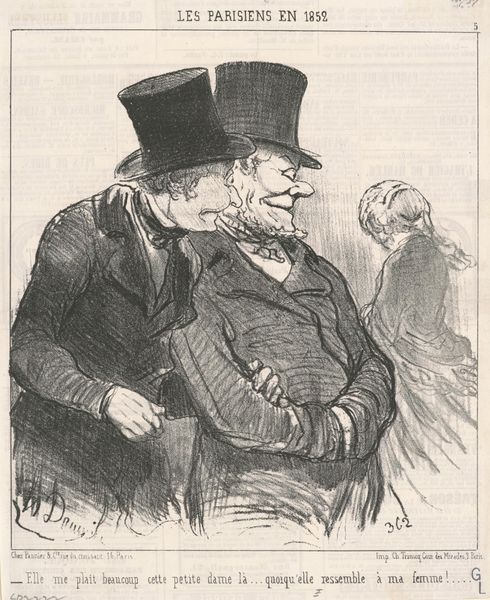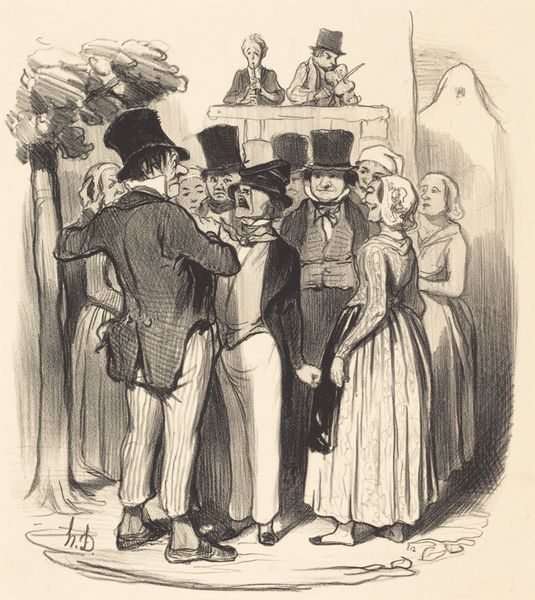
Il me semble que j'aperçois... un... chien... pas muselé!... 1852
0:00
0:00
Copyright: National Gallery of Art: CC0 1.0
Curator: This lithograph, titled "Il me semble que j'aperçois... un... chien... pas muselé!...", which translates to "I think I see... a... dog... not muzzled!", was created by Honoré Daumier in 1852. What strikes you about it initially? Editor: The immediate thing I notice is the sense of implied motion, almost a stumble forward, of these three men. The stark pencil work really captures that ungainly feeling, especially in their oddly matched postures. Curator: Absolutely. Daumier was a master of capturing social commentary through his art. These works were mass produced for distribution in newspapers and periodicals. The lithographic process was revolutionary as it allowed for relatively quick, inexpensive replications, enabling widespread dissemination of his views. Editor: That speaks to a powerful democratization of art, doesn't it? Shifting the art object away from wealthy patrons and putting it in the hands of, literally, the people. Were these images explicitly politically charged, or was Daumier more subtle? Curator: He tackled everything from political corruption to everyday Parisian life. His prints are filled with satire of the bourgeoisie, critiques of the legal system, and observations about the changing social fabric of France. Consider, the title makes mention of the fear around unmuzzled dogs and the concern for public safety - a recurring motif for broader, unaddressed anxieties. Editor: It's fascinating to consider the role of print media as a conduit for social critique. This was an era before widespread photography or even easily accessible visual art. His art provided a public stage for discussions that otherwise might stay private. Curator: And that access matters greatly in understanding Daumier's project: making art more democratic, allowing anyone with a newspaper to analyze issues, or even just chuckle with some satirical wit. Editor: The act of widespread distribution creates a shared visual vocabulary that shapes political discourse, giving the drawings themselves agency. Considering Daumier’s dedication to lithography truly transforms our understanding of the medium's impact during this period. Curator: Indeed. The medium itself contributes to the meaning and the reach of the message, beyond the immediate reading of this humorous depiction of perceived chaos and control. Editor: Thank you, that really altered my view of the material culture of Daumier's world and how intertwined it was with his art!
Comments
No comments
Be the first to comment and join the conversation on the ultimate creative platform.
